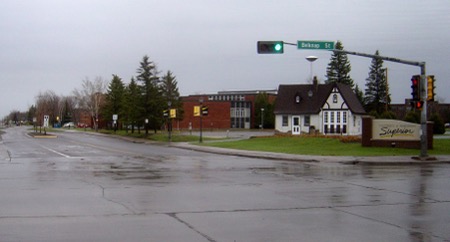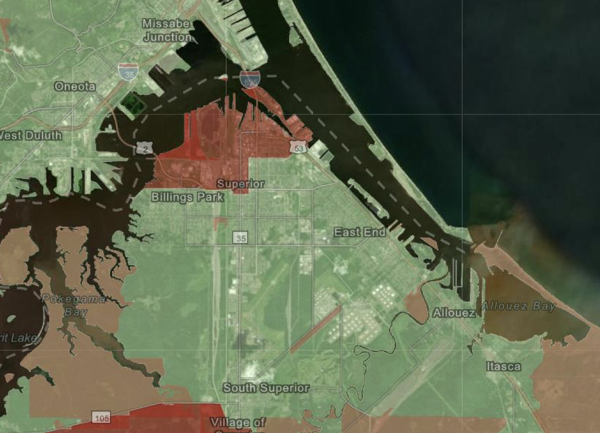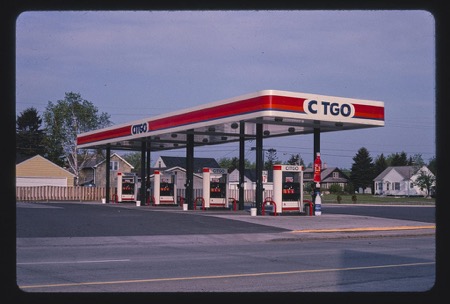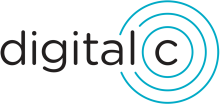
Superior, Wisconsin’s community-owned open access fiber network has gone live in its first two deployment neighborhoods, as the city works toward providing affordable next-generation fiber access to the city’s long under-served community of 26,000.
When we last checked in with Superior back in April, the city was working with Nokia for final configuration and testing before launch. Now, the municipal broadband network says its ConnectSuperior fiber network is live in its first two target neighborhoods in the northern part of the city (see the city’s latest deployment map).
The city’s open access network means that multiple broadband providers can compete over the same shared infrastructure. Historically such a model helps boost competition and drive down costs for both consumers and competitors. That’s already the case in Superior, where the city’s website lists two providers – Advanced Stream and Superion Networks – with more on the way.

Advanced Stream is offering locals three tiers of service: a symmetrical 300 megabit per second (Mbps) tier for $63 a month; a symmetrical 650 Mbps tier for $75 a month; and a symmetrical one gigabit per second (Gbps) tier for $83 a month.
Superion is offering three tiers of service as well: a symmetrical 300 Mbps tier for $63 a month; a symmetrical 650 Mbps tier for $75 a month; and a symmetrical 1 Gbps tier for $85 a month. Both companies offer phone bundles for a modest additional surcharge.
“With this system, we’re able to really (welcome) as many Internet service providers as the market can bear,” Becken recently told Wisconsin Public Radio.
A Game Changer For Local Connectivity
Like so many U.S. communities, Superior has long suffered from a lack of competition among major regional telecom monopolies, resulting in spotty access, high prices, and substandard customer service. For years the city was largely dominated by a patchy duopoly featuring Charter (Spectrum) cable and Verizon.
Fed up with shoddy broadband during peak Covid lockdowns, 2020 the city passed a resolution declaring fiber essential infrastructure. In 2021, the city council voted overwhelmingly to move forward on a deployment master plan developed for the city by EntryPoint Networks.
In 2023 the Superior city council voted 8-1 to approve deployment in the project’s first pilot area: a swath of around 830 homes and businesses lodged between Tower Avenue, Belknap Street, and North 21st streets. Phase 1 of the network deployment cost $6.25 million, buoyed heavily by grants made possible by the 2021 federal American Rescue Plan Act (ARPA).
“Phase 1 is coming in at $6.25 million—and that includes consulting, engineering, build, inside plant, staff—etc.,” Stephanie Becken, broadband manager for ConnectSuperior, told ILSR in an interview last April. “That $6.25 million covers a lot. The actual build costs came in 40% less than projected.”

The full cost of deployment citywide is projected to cost somewhere between $40 and $60 million, with costs ultimately offset by what they hope is a 40 percent or higher take rate. The city has also applied for some of Wisconsin’s $1 billion in Broadband Equity, Access, and Deployment (BEAD) grants made possible by 2021’s Infrastructure bill.
Wisconsin Public Radio reporter Richelle Wilson recently spoke with city officials about how "the new network has been a game-changer for Superior," as well as to our own Christopher Mitchell, Director of ILSR's Community Broadband Networks initiative.
Officials like Becken say community feedback and sign up rates are extremely promising.
“We’ve hit 10 percent of our potential customer base, which is huge,” she said. “That was a (goal) number for an entire year, and we’ve done that in two months. And it just keeps growing.”
Real, Local Solutions in The Wake Of Federal Apathy On Affordability
Superior’s foray into providing community-owned affordable access comes as the federal government under the Trump administration has all but abandoned FCC broadband consumer protection, efforts to seriously improve competition, and any pretense that the federal government cares about broadband affordability and equity.
Superior’s success also comes despite the fact that Wisconsin is one of 16 U.S. states with laws limiting municipal broadband networks. Such laws are generally ghost written by unpopular regional telecom monopolies desperate to protect the dysfunctional status quo. House Republicans have even tried to impose a federal ban on municipal broadband.

As Mitchell noted to local public radio, local Wisconsin tribes are also taking matters into their own hands instead of waiting for monopolies to show genuine investment interest in their communities. The result is a grass roots, highly localized solution to a longstanding problem caused by market failures that became all too obvious during COVID lockdowns.
Wisconsin currently ranks 45th in terms of broadband speeds, access, and reliability. Roughly 10 percent of state residents don’t have a home broadband connection, either due to availability or affordability. Decades of frustration have resulted in organic, highly localized, micro-revolutions all over the country.
Efforts that increasingly are having to face modern communications challenges without any sort of support from an increasingly apathetic federal government.
As for Superior, Becken says locals are thrilled to no longer be trapped under the thumb of uncompetitive regional telecom giants and their substandard broadband service.
“What we’re already seeing is people who are on the network almost forgetting what it used to be like,” she said. “I’ve already had people say, ‘Oh, my gosh. It always works! I just don’t think about it anymore. I don’t have a spinning wheel.’”
Header image courtesy of Wikimedia Commons, CC BY-SA 4.0, Attribution-ShareAlike 4.0 International
Inline image of University of Wisconsin-Superior main entrance, with Campus Welcome Center in foreground courtesy of Wikimedia Commons, CC BY 3.0, Attribution 3.0 Unported
Inline map courtesy of SuperiorConnect Master Plan
Inline image of gas station on Route 2 in Superior, Wisconsin courtesy of LOC’s Public Domain Archive, PDM 1.0, Public Domain Mark 1.0 Universal







